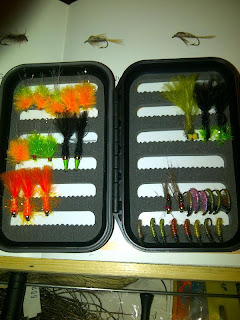Entering Terriers.
I never had a kennel of terriers so my
terrier always had to perform a number of rolls; bolting quarry,
working the rough, and hopefully retrieving, though the last was,
most of the time, a vain hope.
My first proper terrier was a small
Jack Russel type bought from a local farm which bred all manner of
hunting dogs. I have no recollection of entering Rick it just seemed
to happen, he happily worked anything from moles to foxes, from
sparrows to pheasants.
He quickly learnt
to respect ferrets, after getting bitten when sticking his nose down
a rabbit hole while the ferrets were down. On another occasion he
grabbed a rabbit which had bolted with a ferret attached.. That took
some sorting out as it was difficult to know which animal to grab
first.
He never won any shows as he had quite
a broad chest and had queen Anne legs, but he worked for years, he
had all the qwirks of a terrier having that sneaky intelligence which
so characterised that breed. We would
occasionally find a cat or chicken dead on the
farm yard, but of course we never ever saw him kill them or even show
any interest in them, he would be sitting innocently by the back door
waiting to be let into the kitchen. But he was the only one there to
do the deed.
My second terrier I
remember entered himself to rabbits when he was three months old, I
was walking along a hedge row and he just popped down a rabbit hole
and out shot a rabbit the other end, with this tiny pup in hot
pursuit. I bought him from Brecon Hunt kennels, a cross between a
Jack Russell and a Border terrier, He had the shape of a Jack Russell
and the colouring of a Border.
He again would work
anything as well, but was not too hard and never got badly scarred.
These little terriers just love to work, and I suppose that's what
makes them so loved by sportsmen, they are so adaptable and full of
fun. Hunting as a pack after rats they just exude enjoyment at what
they do.
I suppose entering
them for a specific prey is a lot more difficult and many of the old
books going to great lengths in giving complicated training regimes
for getting your terrier of rabbits, badgers or what ever. I have
never really tried as I love to see them work. As I write my present
terrier, a mix of goodness knows what, is sat by the french window
staring at a mouse feeding on the bird seed. She is very much a
companion dog, but even she loves to hunt, and is about to be entered
to mice.


